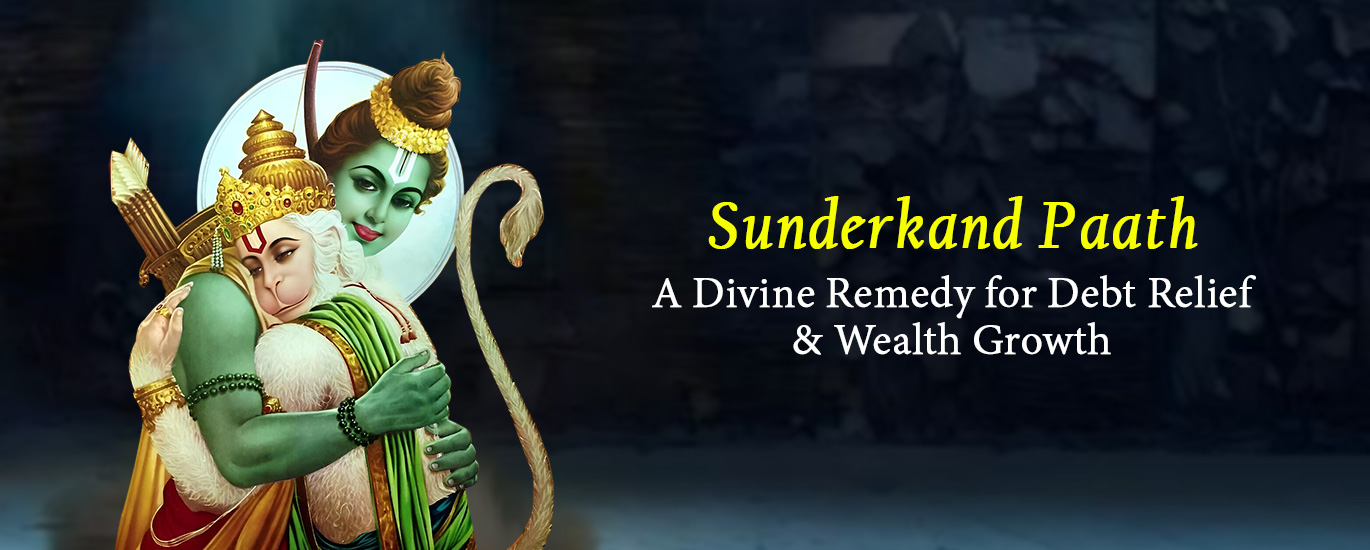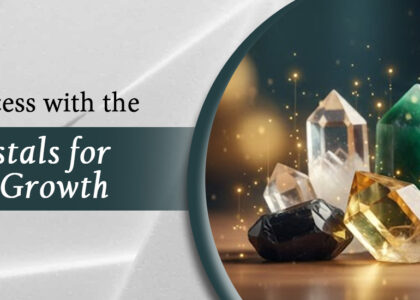Have you ever felt burdened with money pressures – unpaid loans, bills continuing to pile up, uncertain job income? Do you lay up at night thinking about how you’re going to get out of debt, build your savings, and improve your financial situation? If so, you’re not alone, and you may be looking for more than practical solutions to create spiritual change a bit deeper, more lasting change.
What if there is spiritual practice that benefits you by strengthening your resolve from within, cleansing your thinking and even assisting in the attraction of abundance – not necessarily right away in worldly goods – but by shifting your alignment of thinking, energy, and prosperity? That practice is Sunderkand Ka Paath.
What Is Sunderkand Ka Paath?
The Sundara Kand is the fifth chapter of the Ramayana, one of the great epics of India. It narrates about Lord Hanuman’s journey to Lanka in search of Sita, his confrontation with despair, and his unwavering devotion, courage, and service.
Sunderkand Ka Paath refers to the recital, chanting, reading, or listening to Sundara Kanda, with devotion, often in Sanskrit or in a translation, often with melodic chanting or by reading out loud.
- Sundara means “beautiful,” referring both to the beauty of the spiritual journey and the beauty of the ethos: selflessness, courage, service.
- Kanda means “section” or “book.”
- So Sunderkand Ka Paath is literally “the reading or recitation of the beautiful section (of Ramayana).”
Devotees believe that Sunderkand Ka Paath invokes divine protection, removes troubles (sankat), and opens doors of grace. The sound, rhythm, and meaning of the verses are said to vibrate with powerful energy—and many consider it particularly helpful for financial obstacles, debts, fear of lack, and for inviting prosperity.
How Sunderkand Path helps in Debt Relief through Spiritual Practices?
1. Removing Obstacles
One of the central qualities attributed to Lord Hanuman is that he is Sankat Mochan—the remover of hardships. When you do Sunderkand Ka Paath, you are invoking that divine quality. The mental blocks, fears, guilt, shame, and procrastination around debt tend to weaken. As these inner obstacles fall away, practical obstacles often ease too—opportunities appear, clarity comes, decisions feel more aligned.
2. Reprogramming the Mindset
Debt often comes with scarcity mindset: “I will never have enough,” “I must hide from embarrassment,” “I’m unworthy.” Sunderkand Paath helps replace these with abundance mindset: faith, courage, self‑worth, possibility. As you repeat verses that praise virtue, courage, loyalty, service, your belief in possibility strengthens.
3. Stress Relief and Mercy to Self
Debt is the source of chronic stress — a lack of sleep, anxiety, fear. Stress impairs our ability to think clearly, plan and act. When you perform Sunderkand Paath, the method of reading, the rhythm, the devotional emotion help you pacify the body and mind. Sunderkand Path Vidhi will benefit you by keeping your mind stable so you come to know what to choose — negotiating with liabilities, discovering new sources of income or not making any hasty decisions.
4. Strengthening Discipline & Consistency
Doing Sunderkand Ka Paath regularly demands discipline: setting aside time, resisting distractions, preparing the space, sticking with the recitation. That discipline often spills over into financial habits—budgeting, saving, avoiding wasteful spending, investing in long‑term rather than quick fixes.
5. Aligning with Divine Abundance
In many spiritual systems, material abundance is not only a matter of what’s outside us; it’s the manifestation of harmony with higher laws: generosity, righteousness, ethical earning, gratitude. Sunderkand Ka Paath serves to tune your life to those frequencies: you become more generous, fair-minded and conscious of gratitude — which frequently leads to greater trust, community support and unexpected boons.
How To Perform Sunderkand Ka Paath for Financial Transformation
Regular practice of this sacred text creates positive energy that attracts prosperity and removes monetary obstacles from one’s life and engaged body, mind, heart, and action in it. Here explore a guide on how to do it purposefully.
- Set the Intention First
Before beginning, take a moment of silence. Think clearly about what you wish: relief from debt? Growing wealth? Healing of financial wounds? Be honest. State an intention: “May I be relieved of my debts” or “May wealth come in right ways.” A clear intention focuses your energy. - Create a Sacred Space
Remove clutter and clean your room. One must light a lamp or candle and burn incense for the ritual preparation. Moreover, placing a photograph or idol of Lord Hanuman enhances the sacred atmosphere, these preparations help you settle your internal state. These preparations help you settle internally. - Choose an Auspicious Time
Early morning during Brahma Muhurta or dawn time itself is most suitable time. Many people’s prefer Tuesdays, Saturdays, or full moon and new moon as they are getting extra energy. We are seeing that doing it regularly matters more than the exact time – even only 5 or 10 minutes every day or any other day works well if you keep doing it the same way. - Start with Prayers
As per tradition, invoke your Guru name (if you have any Guru else chant this mantra 2 to 3 times “Guru Brahma Guru Vishnu Guru Devo Maheshwara , Guru Saakshat ParBrahma Tasme Shri Gurve Namah”) after that invoke Lord Ganesha first to remove obstacles, then pray to Lord Ram and Hanuman regarding successful completion of work. We are seeing that starting with only a short hymn or chant like Hanuman Chalisa helps to make the mind calm and open the heart. - Recite with Full Attention
Sunderkand Ka Paath can be done in Sanskrit only or in your own local language also. As per proper practice, you can use translations or read with meaning regarding verses you don’t know. Avoid rushing through the recitation. Speak clearly, chant aloud if possible. If reading silently, still try to “hear” the sound in your mind. Let each shloka sink in - Visualize During Recitation
As you recite, imagine your debts—financial obligations, stress, fear—as burdens you are handing over. Visualize them dissolving, being lifted. Then imagine wealth, peace, sufficient provision, financial expansion, or opportunity appearing. Visualization works in tandem with faith. - Do Charity / Daan
After your Paath, offer something—food, money, time, help—to someone in need. Even a small act of giving helps release hoarding or fear, and aligns your energy with generosity, which is a key quality in abundance. - Close with Gratitude and Surrender
Thank Lord Hanuman, Lord Ram, the divine. Prayer practice requires further surrender to divine will itself. Complete gratitude and letting go brings spiritual fulfillment itself. - Repeat Regularly
Make a schedule: daily, alternate days, weekly. Perhaps every week on a sacred day. Consistency helps build momentum. Even missing occasionally is okay; what matters is returning.
Tips To Maximize the Benefits of Sunderkand Ka Paath
To deepen and amplify the effects of Sunderkand Ka Paath in bringing debt relief and wealth growth, you can adopt these practices. Some are about mindset, some about external behavior, but all multiply the impact.
- Set clear, written financial goals: Alongside your intention during Paath, write down measurable goals—how much debt to pay off, by when; how much savings you want; what expenses to reduce. Tangible goals help you notice progress and stay motivated as you carry out Sunderkand Ka Paath.
- Consistent schedule: Choose days you can commit to without distraction. Pick days and times that you can do it without distractions. Make it a habit to do this each week on certain days (such as morning and evening, Tuesdays, or on the full moon). Repetition will develop discipline and then you can build spiritual momentum.
- Pair spiritual work with financial discipline: While the spiritual recitation may be fostering your faith and tranquility, at some point you are going to need to do something practical – like track your income and expenses, cut back on unnecessary spending, avoid excessive loans with high interest, possibly look for alternative income streams or ways to enhance your income. If you just have faith but never take action, your faith is basically on the inside.
- Practice gratitude daily: After each Paath, or even daily in the morning/evening, list things you are grateful for—very small things included. Gratitude shifts focus from lack to abundance, which raises your energetic state and attracts more positivity.
- Give generously: Regular charity is essential. It can be food, clothing, time, money, or a kind service. Giving helps dissolve fear of lack and opens channels of abundance. Underlying many spiritual traditions is the principle: generosity leads to overflow.
- Use devotional music or chanting: You might listen to a beautifully recited or sung version of Sundara Kanda, or include bhajans, kirtans, or mantras that honor Hanuman or Ram. Melody and rhythm elevate your energy, making your Paath deeper.
- Maintain a Paath journal: After each session, take a note about how you feel if you are feeling any internal shifts, any subtle signs of dreams, chance meetings, intuitions which seem connected to your financial situation. When you look back, you might be surprised to see evidence of change and build faith.
- Guard your thoughts and speech: Before and after Sunderkand Ka Paath benefits, avoid negativity: complaining, gossip, jealousy, fear talking about money. Replace those with positive affirmations such as “I am supported,” “Abundance flows to me,” “I am capable of meeting my obligations.”
- Visualization & meditation: As you are reciting, close your eyes sometimes and picture yourself free of debt—see the numbers gone, see your life with stability, imagine doing what you couldn’t before because of financial strain. Visualize wealth growing, projects succeeding, opportunities arriving.
- Fasting or partial fast: If your health and beliefs allow, doing fasts on special days (e.g., Tuesday or Saturday) from time to time helps purify mind and body. You may notice that fasting (even light fasting) can sharpen your usual focus and make the energy of Sunderkand Ka Paath more powerful.
- Community/group recitation: When Sunderkand Paath is recited in a group, the level of energy is also elevated. If you can, try to recite with family, friends, or a spiritual group from time to time; the cumulative devotional energy will help facilitate change.
Myth, Symbolism & Faith
In order to experience a fuller appreciation of the Sunderkand Paath, we will discuss a few of the points of its mythological symbolism, and how it can bring some greater power for relief for our financial obligations, as well as for abundance.
- Hanuman’s adventure to Lanka symbolizes overcoming very difficult obstacles. Lankan is synonymous with a reality of illusion, of fear, of separation. For someone in debt, “Lanka” is the weight of financial obligation, the fear, the shame. Hanuman’s resolve, overcoming of adversity, his devotion to Lord Ram—all these are symbolic resources one invokes when doing Sunderkand Ka Paath, helping you psychologically cross your own “Lankas.”
- Sundara Kanda’s emphasis on service, humility, surrender. Even though Hanuman is powerful, he remains humble, devoted. These qualities—humility, service, right intention—purge ego’s greed, entitlement, impatience. For becoming wealthy or clearing debt, it’s not enough to want material gain; how you want it, and how you act in wanting it, matters according to many spiritual teachings.
- Sound vibrations and mantra effect. Chanting the shlokas in Sanskrit language, chanting divine names, and chanting in melodic patterns, all have vibrational power. The vibrations are said to act on subtle energy fields in you and help to dispel fear, unleash strength within, generate clarity, and open pathways that appeared closed.
- Faith and surrender. One of the hardest parts of debt relief is surrendering anxious control—worrying about outcomes, holding onto fear. Sunderkand Ka Paath invites you to surrender: “I have done my best; I release the results; I trust divine help.” That surrender reduces mental suffering, which often drains the energy needed to act, plan, save, invest.
Sunderkand Ka Paath is not only a recited text – it is also a spiritual practice, a remedy, and a tool for inner change. It asks you for trust, patience, discipline, and integrity. In return it gives you:
- The ability to release fear, guilt, and shame around money
- The ability to build an abundance mindset
- The discipline to make wise financial choices
- The ability to open up to generosity, gratitude, and alignment with a higher purpose
Relief from and growth in debt or wealth will not happen by wish alone – they happen where inner clarity meets aligned action, where faith meets discipline, where spiritual practice meets ethical practice. That is how you transform.
Frequently Asked Questions
Q1. Must I know Sanskrit to recite Sunderkand Ka Paath properly?
Not at all. While Sanskrit gives you traditional vibration, what truly matters is faith, devotion, sincerity. If you don’t know Sanskrit, recite in your native language, or follow along with translation. Understanding meaning enriches the effect.
Q2. How often should I do Sunderkand Ka Paath for debt relief?
There’s no one‑size‑fits‑all. Some begin with once a week, others every alternate day, some aim for daily recitation. The important thing is regularity: choosing a frequency you can maintain. Even doing small parts daily is more beneficial long‑term than doing full recitations but irregularly.
Q3. Is there a best place to do Sunderkand Ka Paath?
Quiet, clean, peaceful spaces are ideal. An altar is nice but not mandatory. Facing north or east is considered auspicious. A calm environment helps reduce distraction and deepen focus.
Q4. Can I combine Sunderkand Paath for business growth with other spiritual practices?
Yes. Many people combine it with meditation, chanting, Hanuman Chalisa, yoga, or devotional music. These complement each other. The key is that you don’t overload yourself to the point of burnout.Q5. If debts don’t go away immediately, does that mean the practice isn’t working?
Not necessarily. Some of the effects are subtle: a clearer mind, new ideas, a calmer system, better decision making, inner peace, etc. Material changes take longer and may not happen right away. Trust that you are going through an inner transformation that will precede external change. Keep the faith, keep practicing and take action.






